by Caitlin Cassidy and David Portney
Stiles Associates
At Stiles, we see all types of companies representing different industries currently experiencing their own unique challenges with the labor market. We listen keenly, and as a result, have a unique perspective on many of the major pain points they face every day. While it depends on the ownership structure, we have noticed several trends affecting the private equity, publicly owned and privately owned sectors.
Publicly owned
Closing cultural gaps is a hot topic among publicly owned companies. Leaders are responsible for removing cultural barriers that often arise when charged with creating a standard operating platform in sites that spread across the globe. Individuals in different parts of the world – and sometimes different regions of the same country – require different leadership styles based on generational traditions. Finding the right A-players who can fill those vital roles has become one of the most important, yet difficult problems to solve. Solutions can come from proper training and promotion from within or tapping into the vast labor market from outside the organization.
Privately held
Labor retention and the construction of high-performing teams have become significant challenges in privately held companies, but are typically smaller in scale compared to the others mentioned in this blog post. Right now, we’re seeing leaders with a vision on growth try to mitigate disruptions in supply chain and materials by increasing floor-level leadership using Lean and continuous improvement methodologies to address these issues head-on.
Private equity
As Stiles Partner & Vice President Matthew Ayers explained in a separate blog post, while there’s no better time to work in PE, the hyper speed in which it moves can be quite unique when searching for top talent – the quick turnarounds plus the increasing growth via mergers and acquisitions can present significant labor issues. The more businesses PE firms acquire (large and small), the greater the cultural barriers those companies have when labor and resources are shared. In these cases, some turnover is inevitable, but the gaps in knowledge that happen as a result can be a headache.
Since growth is the name of PE game, whatever makes that happen quicker and for both the short and long term is the primary goal. To get there, a question that often requires a quick answer is what assets and leaders already in place should be kept and how many new individuals from the outside should be sought after, if any? Building a high-performing team is a company’s top priority in this space, so whatever makes that happen in a timelier fashion is usually the path travelled.
While there is certainly no silver bullet in tackling these pain points, leaders with a special ability in transforming companies are one of the best solutions. From the smallest of privately held companies to multibillion-dollar publicly held corporations, training current leaders in Lean and / or finding new ones with that experience can pay incredible dividends.
If you’d like to hear more about Stiles' recruiting capabilities and how Lean leaders can help your company, please fill out this brief form and a member of the Stiles team will quickly reach out.

